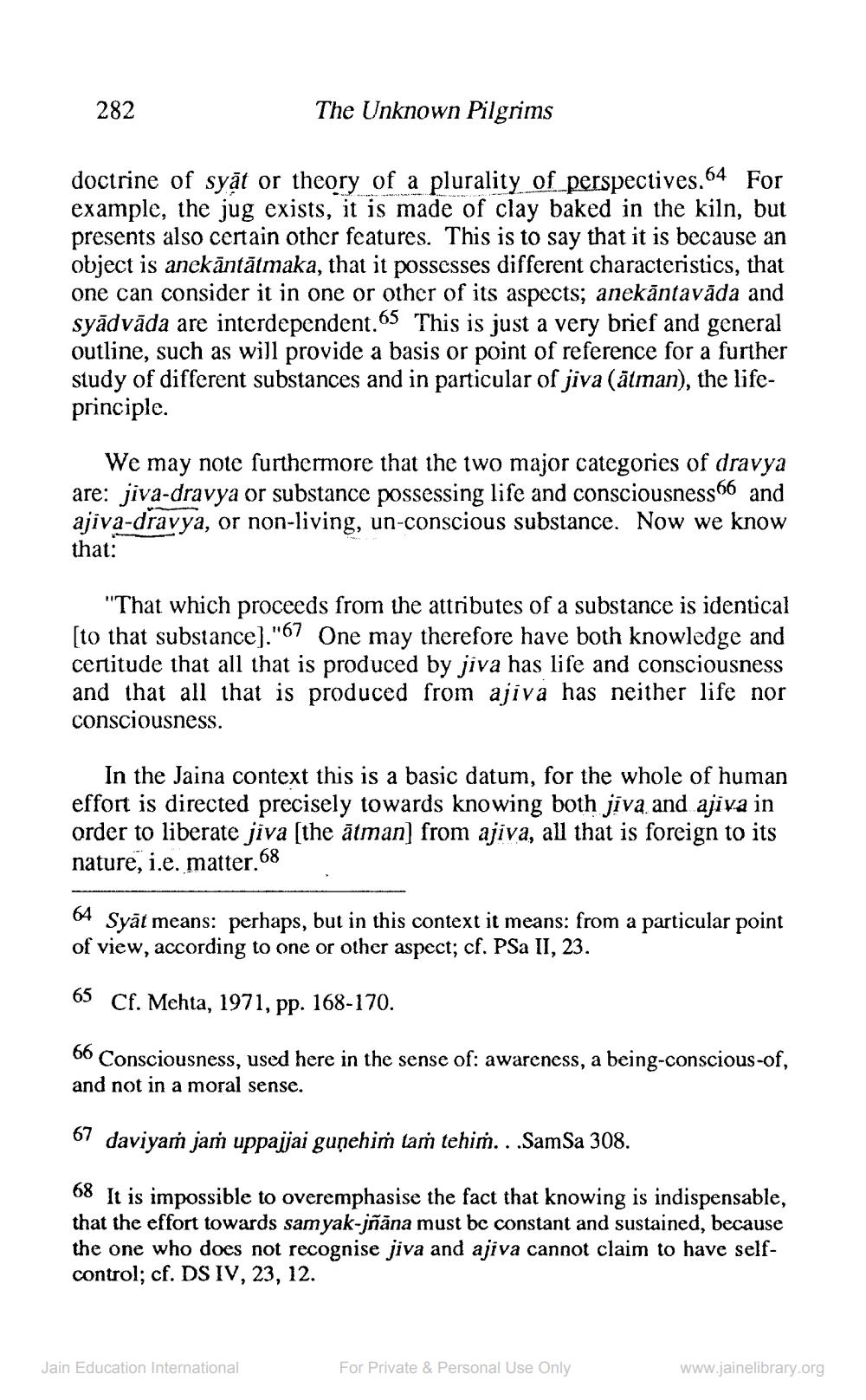________________
The Unknown Pilgrims
doctrine of syat or theory of a plurality of perspectives.64 For example, the jug exists, it is made of clay baked in the kiln, but presents also certain other features. This is to say that it is because an object is anckantātmaka, that it possesses different characteristics, that one can consider it in one or other of its aspects; anekāntavāda and syādvāda are interdependent.65 This is just a very brief and general outline, such as will provide a basis or point of reference for a further study of different substances and in particular of jiva (ātman), the lifeprinciple.
282
We may note furthermore that the two major categories of dravya are: jiva-dravya or substance possessing life and consciousness66 and ajiva-dravya, or non-living, un-conscious substance. Now we know that:
"That which proceeds from the attributes of a substance is identical [to that substance]."67 One may therefore have both knowledge and certitude that all that is produced by jiva has life and consciousness and that all that is produced from ajiva has neither life nor consciousness.
In the Jaina context this is a basic datum, for the whole of human effort is directed precisely towards knowing both jīva and ajiva in order to liberate jiva [the ātman] from ajiva, all that is foreign to its nature, i.e. matter.68
64 Syat means: perhaps, but in this context it means: from a particular point of view, according to one or other aspect; cf. PSa II, 23.
65 Cf. Mehta, 1971, pp. 168-170.
66
Consciousness, used here in the sense of: awareness, a being-conscious-of, and not in a moral sense.
67 daviyam jam uppajjai guṇehim tam tehim...SamSa 308.
68 It is impossible to overemphasise the fact that knowing is indispensable, that the effort towards samyak-jñāna must be constant and sustained, because the one who does not recognise jiva and ajiva cannot claim to have selfcontrol; cf. DS IV, 23, 12.
Jain Education International
For Private & Personal Use Only
www.jainelibrary.org




